#dnd guide
Explore tagged Tumblr posts
Text
When you're human and make a mistake-
Glad to know that, despite the many months it's been since I officially released the Unofficial D&D Guide to Minecraft Diaries, that there had been a mistake in the Community category without me ever noticing ^-^;
I'm so terribly sorry! I only clocked this in because I was going to use the Community Cards again in the Unofficial D&D Guide to Genshin Impact pdf.
So, although indirectly me promoting this again, here's an updated version of the PDF! There may be a few typos, but at least those ones aren't as important as the one I decided to fix ^-^
The chaos that can ensue if I don't PROOF READ MY DAMN NOTES
There are no drastic changes compared to the last version, so if you have the previous one, it's still pretty much the same. I just updated the Loreborne Community Card (sourced from Daggerheart by Critical Role) to ACTUALLY have its proper words instead of it being an unintentional copy and paste of Wildeborne
#dnd#mcddnd#dungeons and dragons#aphmau mcd#update#homebrew#dnd guide#minecraft diaries#aphmau minecraft diaries#dnd homebrew
8 notes
·
View notes
Text

Building a Legendary Dungeons and Dragons Campaign: A Guide to Worldbuilding and Adventure Writing
Creating a compelling and immersive world is a crucial part of playing Dungeons & Dragons. As the Dungeon Master, it's your job to bring your world to life and make it feel like a real place that your players can explore and interact with. Here are some tips for building a world that will captivate your players:
This may be quite a long list so we advise you to grab a pen and paper to jot down any information that you find relevant.
Start with a Concept
Start with a central conflict: A great way to create a compelling concept for your D&D world is to start with a central conflict. Think about the main struggle or tension that exists in your world, and how it affects different characters and factions. This conflict can be anything from a war between kingdoms to a struggle between good and evil.
Consider the scope of your world: Before you start creating your world, it's important to consider the scope of your project. Are you creating a small region or a vast continent? Are you focusing on a single city or exploring an entire world? Understanding the scope of your project can help you create a concept that is manageable and focused.
Incorporate player input: Your players are going to be the ones exploring and interacting with your world, so it's important to incorporate their input into your concept. Ask them what kind of world they want to explore and what themes and tone they are interested in. This can help you create a concept that is tailored to their interests and preferences.
Use inspiration from other media: If you're struggling to come up with a concept for your world, don't be afraid to draw inspiration from other media. Books, movies, and TV shows can provide great inspiration for your world, as can real-world history and mythology.
Focus on unique elements: Finally, when creating your concept, focus on unique elements that will set your world apart. Think about what makes your world different from other D&D settings, and incorporate those elements into your concept. This can help your world stand out and provide a fresh experience for your players.
Create A Map
Start with a basic outline: Begin by sketching a basic outline of your world. This can include continents, oceans, and major landforms.
Add details: Once you have a basic outline, start adding details such as mountain ranges, rivers, and forests. Think about how the geography of your world affects the climate and resources of each region.
Consider the cultures: Think about the different cultures and civilizations that exist in your world, and how they relate to each other. Consider their languages, religions, and customs.
Create landmarks: Create unique landmarks such as ancient ruins, magical towers, and important cities. These landmarks can serve as points of interest for your players to explore.
Add labels: Once you have created your map, add labels for different regions, cities, and landmarks. This will help your players navigate your world and understand its geography.
Populate Your World
Create different races and cultures: Populate your world with different races and cultures, each with their own unique customs, languages, and history. Think about how these races and cultures interact with each other and the impact they have on the world.
Develop unique characters: Populate your world with unique and interesting characters, both good and bad. Think about their personalities, motivations, and how they fit into the world.
Create organizations and factions: Create different organizations and factions that exist within your world, such as political parties, religious groups, and guilds. Think about their goals, methods, and how they interact with each other.
Add supernatural elements: D&D is a fantasy game, so don't be afraid to add supernatural elements to your world. This can include magic, mythical creatures, and powerful artifacts.
Create A History
Consider history and lore: Populate your world with a rich history and lore. Think about important events and figures from the past, and how they have shaped the world your players are exploring
Incorporate player backstories: Consider incorporating the backstories of your players' characters into the world. This can help make the world feel more personal and relevant to the players.
Start with a timeline: Begin by creating a timeline of major events in your world's history. Think about important battles, wars, and alliances, as well as significant cultural and technological developments.
Consider cause and effect: Think about how different events in your world's history have impacted the present. Consider cause and effect relationships, such as how a major war may have led to the rise of a new empire.
Incorporate mythology and legends: Incorporate mythical elements into your world's history. Create legends and myths that explain the origins of your world and its inhabitants.
Add complexity: Avoid creating a simple, black-and-white history for your world. Instead, add complexity and nuance by including different perspectives and motivations. This can make your world feel more realistic and interesting.
Create significant figures: Create significant figures from your world's history, such as legendary heroes, conquerors, or religious figures. Think about how their actions and beliefs have shaped your world's history.
Incorporate player backstories: Consider incorporating the backstories of your players' characters into your world's history. This can help make the world feel more personal and relevant to the players.
Use real-world history as inspiration: Draw inspiration from real-world history when creating your world's history. This can help make your world feel more grounded and believable.
Add Magic & Monsters
Create a magic system: When adding magic to your world, create a system that explains how magic works. Consider the limitations and costs of magic, and how different spells and abilities are learned and cast.
Add magical creatures: Populate your world with magical creatures such as dragons, unicorns, and griffins. Consider their origins, behavior, and how they fit into your world's ecology and mythology.
Consider the origins of magic: Think about where magic comes from in your world. Is it a natural force, or does it come from a specific deity or source?
Create magical artifacts: Create powerful magical artifacts for your players to discover and use. Consider their history, powers, and the consequences of using them.
Create magical locations: Create magical locations such as enchanted forests, ancient ruins, and hidden temples. Consider the history and purpose of these locations, and the dangers that may lurk within them.
Use existing lore and mythology: Draw inspiration from existing lore and mythology when creating magic and monsters for your world. This can help make your world feel more grounded and believable.
Write Adventures
Create clear objectives: When writing an adventure, create clear objectives for your players to achieve. Think about what the players need to do to complete the adventure and what obstacles they will face along the way.
Develop interesting NPCs: Populate your adventure with interesting non-player characters (NPCs) that your players can interact with. Consider their motivations, personalities, and how they fit into the story.
Include puzzles and challenges: Add puzzles and challenges to your adventure to keep your players engaged and interested. These can be riddles, traps, or obstacles that the players need to overcome.
Add twists and turns: Keep your players on their toes by adding unexpected twists and turns to your adventure. This can include betrayals, unexpected enemies, or sudden plot twists.
Create memorable moments: Create memorable moments that your players will remember long after the adventure is over. This can include dramatic battles, emotional scenes, or epic encounters with powerful monsters.
Consider player agency: Give your players agency in the adventure by allowing them to make meaningful choices that impact the story. This can include different paths to achieve objectives, or moral choices that impact the outcome of the adventure.
Keep it flexible: While it's important to have a clear objective for your adventure, be flexible in how the players achieve that objective. Allow the players to come up with creative solutions and don't be afraid to improvise if necessary.
Conclusion
In conclusion, worldbuilding and adventure writing are essential components of creating a memorable and engaging Dungeons and Dragons campaign. By taking the time to create a detailed world, populate it with interesting characters and creatures, and craft engaging adventures, you can create an immersive experience for your players that will keep them coming back for more.
Remember to be flexible and open to the unexpected, as player agency and creativity are key to a successful campaign. By following these tips and exploring more resources on our Tumblr blog, you can hone your skills as a Dungeon Master and create unforgettable gaming experiences.
And if you're looking for even more ways to express your love for Dungeons and Dragons, don't forget to check out our Etsy store "thatsgeeky" for a wide range of D&D-themed merch.
#geeklife#geeky stuff#geek culture#rpg ressources#rpg character#roleplaying ideas#dnd guide#dnd tips#dnd memes#dnd character#dungeons and dragons#dungeoncore#dungeon and dragons guide#dungeons and dragons tips and tricks#help guide#geek games#tabletop#dnd community#dungeon master#roleplaying games
58 notes
·
View notes
Text
When I finish writing/setting up my call of cthulhu fear and hunger stuff, would it be appreciated if I left a link to the work so others who want to also run something similar can?
I've seen a few people talk about running their own campaign/one shot of F&H in DND. Hopefully this helps those who are planning on doing this.
And since I know tumblr likes polls, have a poll! <3
#i want this to reach many opinions as possible so the tags are gonna be a lot... maybe.#fear and hunger#funger#fear and hunger termina#funger 2#cahara#d'arce#ragnvaldr#enki ankarian#enki#dnd#coc#call of cthulhu#dungeons and dragons#dming#dnd guide#dnd one shot#dnd campaign#coc one shot#call of cthulhu one shot#coc campaign#call of cthulhu campaign#sorry for all the tags luv ya ( ˘ ³˘)#F&H DnD CoC Doc
21 notes
·
View notes
Text
SOON.

#mtg#magic the gathering#dnd#dnd 5e#dnd homebrew#new phyrexia#phyrexian#glistener's guide to new phyrexia
293 notes
·
View notes
Text
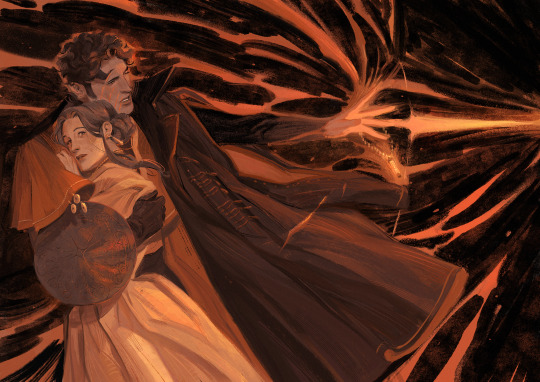
Guiding Bolt 🏹
painting practice with Lydia & Kasper
#illustration#artists on tumblr#art#dnd art#dnd 5e#curse of strahd#curse of strahd art#digital painting#lydia petrovna#kasper dunant#cleric#guiding bolt#konstantin petrovich
3K notes
·
View notes
Text
Have a little proto design for Taurus's dnd minifig I made quickly in Heroforge!



Might have it printed and painted soon! :3
#tsams#laes#sams#sun and moon show#lunar and earth show#astral body#dnd#tsbs#ttrpg art#laes gemini#laes taurus#taurus#Astral field guide#ttrpg
320 notes
·
View notes
Text
No you don't understand how important it is to me that Caleb and Essek have this soft, deep, profound love for each other. These two people who were so broken and saw themselves as so damaged and irredeemable and utterly damned, having the chance to heal together and cultivate this sweet, gentle relationship with each other. The fact that they can now carve out moments of joy together, that they proved you can change and better yourself, with time and effort and love.
Matt taking the time to show that even in just a few little ways, to let Essek express his love so casually and with so much reverence and care is just AUGH. That's how you do redemption arcs. He understood the assignment. That's not only respecting the players for the time they put in to creating these characters and their pathways for growth, but also saying to your players (and viewers), "it's possible. Everyone deserves a second chance at happiness."
They redeemed themselves, together.
#I can't stop thinking about it#I'm also thinking about all the gentle moments Essek had with BH too#him taking on this guiding mentorship role and seeing them for what they are and choosing to trust them and support them#THAT'S also a huge reward to your players too#that's saying “look at this character you cared so much for! look at how far they've come now! this was because of you all!”#I love love love that about ttrpgs/actual plays#critical role spoilers#critical role#cr2#cr3#shadowgast#essek thelyss#caleb widogast#dnd#(my quarterly shipping on main is a bit early sorry)#(monthly shipping on main?)
600 notes
·
View notes
Text

Guidance
1K notes
·
View notes
Text

Powerful and immortal, a vampire often rules over mortal lands with an exceptionally strong ego and sense of self-importance. (Denis Beauvais cover for AD&D 2e Ravenloft supplement RR3: Van Richten's Guide to Vampires, TSR, 1991.) Vampires often wear clothing that resembles their bat form. The blood vessels in the cape here are a particularly fine touch of evil elegance.
#D&D#Dungeons & Dragons#Denis Beauvais#Ravenloft#vampire#dnd#gothic horror#horror#undead#Van Richten's Guide to Vampires#AD&D 2e#D&D 2e#bats#gargoyle#full moon#fantasy castle#TSR#1990s#Dungeons and Dragons
224 notes
·
View notes
Text
Attention fellow Galemancers, I found something extremely relevant to our interests in The 5E Guide to Sex sourcebook:
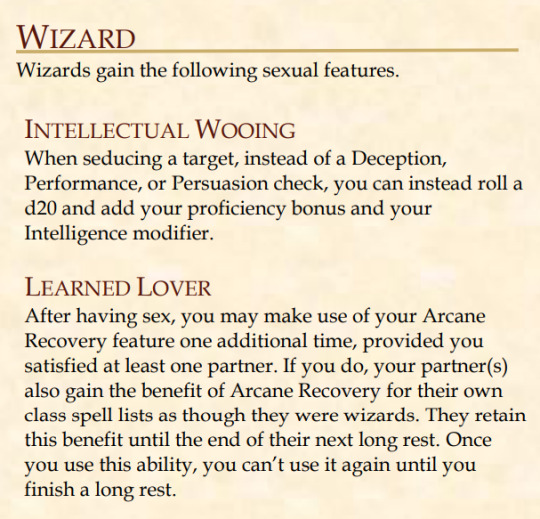
We definitely gotta start incorporating "Gale made me come so hard it restored my spell slots" into our headcanons and fanfics.
#hornyposting#live from the Gale Dekarios Sex Research Institute#BG3#Baldur's Gate 3#Gale#Gale of Waterdeep#Gale Dekarios#Gale BG3#BG3 Gale#I love him so much#fanfic authors pls#bg3 fanfic writing resources#5E Guide to Sex#Dungeons & Dragons#D&D#DnD
1K notes
·
View notes
Text
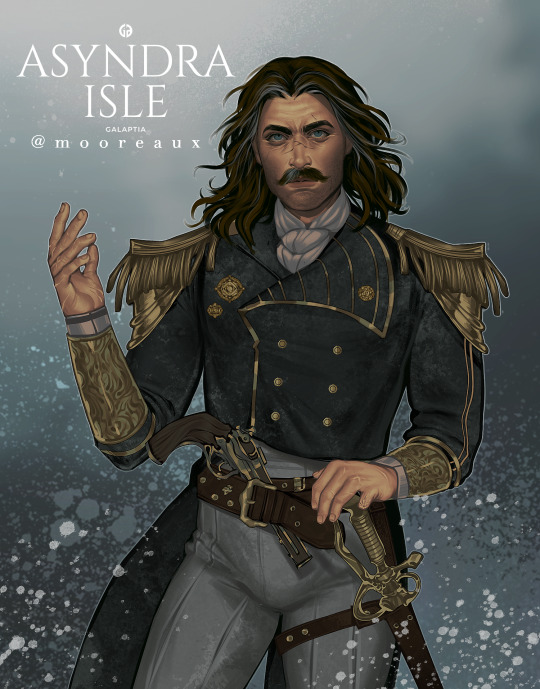
Lord Arthur Abdiel Highcliffe, my contribution to the TTRPG setting guide, Asyndra Isle. A dark fantasy, eldritch horror, pirate themed story to play with your friends. Check it out on Oct 21st
Follow @galaptia to learn more!
217 notes
·
View notes
Text
D&D Settlement Guide Nerd Talk
Hello nerds
Sooo this is an update on the D&D Settlement Guide (mainly tailored to the MCD guide but can be used anywhere).
Jsyk, it's nowhere finished, and this is gonna be a project that'll take a LOOOT of time, especially since I need to playtest it, and I'm working on this alone suidhguigsu (it's hard to think of things to add when there's not really anyone to bounce off of ^-^')
Buuuut I thought I'd give you guys a little post to get a general idea for my plans! Idr if I ever posted something like this earlier, but if I had, it's been a while so it doesn't matter siudghsiigh
While working on this project, I've decided to use a notepad on my PC to keep track of every change I put to it. Basically rules to keep in mind while working on it, concepts that were scrapped, things that were adjusted for better gameplay, etc.
You do not HAVE to, but if you'd like, you're more than welcome to either ask questions or provide suggestions. Help is appreciated, but not necessary.
Keep in mind: I'm keeping this system as SIMPLE as possible to be Beginner Friendly. That way, regardless on how much you've played D&D or TTRPGs in general, you could still (hopefully) have a good time, and not have this system take away from the narrative of the story, but instead enhance it.
This is directly copied from my notepad, so I apologize if there's any strange formatting lmao, it's just a place to jot down changes and thoughts during the process ^-^'
Super silly plan for my "D&D Player Settlement Guide" that is mostly tailored to my game, but can be applied to anything cuz why not.
1). Keep it simple and beginner friendly, easy for anyone to understand regardless of D&D exp.
2). Be generous with coins. Since it costs GP to build, offer enough coins to ensure they CAN build.
3). Use the REGULAR NPC sheet to keep track of the settlement's HP, stats, skills, boons, etc., keeping it simple and (clean) easy to understand for DMs and Players.
4). Do NOT make certain builds require certain specifics outside of "structure requirements", such as materials or manpower.
5). Do NOT have requirements for small details to be built (i.e., sewers, dump, wells, etc.), as those are IMPLIED to be accessible and are likely to never be important for the story.
6). The settlement can MANAGE ITSELF. Players should NOT be required to STAY and MANAGE every tiny detail. Keep the ADVENTURE, do not suffocate the players with boring maintenance work.
Scrapped Plans
Passive Income. Originally planning to ensure a way players could obtain a passive amount of income to ensure they have enough GP to upgrade and build for their settlement, the plan was scrapped due to it becoming a complicated endeavor.
After some thought, it was decided to be unnecessary and cruel, since Passive Income is based on how many weeks or months have passed, and certain buildings require time to be build, as well as keeping track of ALL shops currently in possession, it'll simply become too much to keep track of, and will likely diminish the gameplay and fun trying to keep track of everything.
Additionally, it could create a constant cycle of players building and waiting for GP in one constant sitting, while the building aspect of the settlement should be an endeavor built up over time.
Potential Revision: Provide level-appropriate ranges of GP in the form of "quests" that players can passively say they'll do to obtain GP outside of major storylines. This way, it still provides a passive amount of GP, while also building up their reputation and influence within the area.
Should players pick up a level higher than their settlement level, it will instead trigger an encounter for players to play through rather than just narratively stating they "fulfill the quest", which should always provide a fruitful reward and apply to the major plot. -Perhaps requires a Guild and/or Tavern?
Settlement Skill Proficiencies Originally planned to provide specific Skill Increases based on what bonuses specific buildings provide, it was decided that it provided far too many complications and was completely unnecessary based on the entire game as a whole. Instead of providing the Settlement specific skill increases, it'll instead focus specifically on Attributes that focus more on the Settlement's growth and demeanor without having to think or worry about smaller statistics that will otherwise be completely unused.
Instead, it will be more focused on providing access to certain tools, resources, and advantage on specific checks that suit the building's function, such as a Library providing advantage on research-based checks.
Separating Upgrades and Addons Prior to this change, Upgrades and Add-Ons were attached to direct buildings that they required to be built to upgrade or add onto, but all had varying level requirements compared to the base building required. Upon putting together a list that sorted out everything by level, it made it a complicated read to know what was what level and made the overall look messy.
Instead, upgrades and addons will remain separate entities within the list, but will have a tag attached to their descriptions stating that they CAN be added or upgraded from a particular building. It is not required to own the lower-leveled building unless stated otherwise.
Adjusted Attribute Roles Previously, Charisma was a stat for the Settlement that acted with roles that both Constitution and Intelligence had: Increases Happiness (CON) when high, and increases Corruption (INT) when low. Thinking on the specifics, it was rather odd to have a stat share a role that two others had, but upon seeing a description that was attached to the Academy, it was instead changed to have Popularity when high, and Disrespect when low.
This stat will not be used directly, but can directly impact how another settlement may view the players' settlement, and provide unique Roleplaying and Narrative events.
Additionally, Constitution's decreased stat (previously "increases conflict and violence"), has now been changed to "Violence".
Also added "MIN" statistic to all attributes, all having a minimum of 1.
Categorizing Building List Originally, the plan was to have each building separated into "categories", such as "Residential", "Business", "Entertainment", etc. However, when sorting it into handouts in Roll20, it made things far too complicated. Imagining my players opening up each and every handout to search for something wasn't ideal. Although it would've been organized, it would give off a messy look, and instead do the opposite of being organized.
Instead, everything has been organized to be in ONE handout. The only difference here is that everything is sorted by level and alphabetically. This way, players don't have to keep looking around for something and get lost, and can easily lock in on specific leveled sections when making building decisions, and not feel lost in an area that doesn't require complications.
Concept Idea: Special NPC Buildings When thinking about what buildings to add to make the list of settlement buildings longer, to accommodate the fact that the max settlement level is 20, I came up with the idea of potentially having special NPCs have unique building requirements that only THEY can offer. Only once that NPC is a settler can players build that structure, and that NPC, if residential or business, will be stationed in that building.
Should the settler leave, the building will remain unoccupied unless interfered magically or destroyed (if interfered or destroyed, it should hold narrative importance).
Provided a "Level Up Requirement" list for players to have ease of access to know what is required to level up their Settlement. This provides a list of buildings required, how much GP it'll cost to do, and how many in-game days it'll take to get done.
Milestones are suggested by DMs themselves to implement to ensure that there are breaks between each "management" section to not only ensure that players can't just focus on constant level ups, but also as a means to provide plentiful GP and continue engaging with the world around them.
Example: The village has a collapsed mine that the players cannot get access to. This can provide a future questline for players to get involved in to get access to the mine, and in turn, its resources (another source of GP).
Debuff Quests/Request Bonuses Original concept was that, with each Quest/Request fulfilled, they would obtain bonuses from those quests. Some offer GP, and most offer Stat Increases for the Settlement Sheet. However, due to the necessity of GP, and the fact that players would be able to grind out MAX stats with this method, it was instead nerfed to only get 4 quest/request Stat Increases PER SESSION.
If a Quest/Requests offers two or more stat increases, the Settlement still gets them, however, once the players complete 4 quests, they will no longer obtain any more Stat Increases, but will continue to obtain GP. This way, players can't just easily become recognizable and popular when they haven't even finished repairing the settlement.
Changed the amount of quests available per Settlement Level Originally, there was going to be a d20 table with a list of quests based on the Settlement's level. However, it was quite a daunting task to think of 20 different quests/requests suitable for said level, and was decided to make it smaller.
Instead, once players access level 2 and obtain a Tavern OR Inn to access quests/requests, they'll instead start off with 4 quests and 4 requests available to choose from.
From level 2-4, there will only be 4 available quests and requests each.
From level 5-8, there will be 6 available quests and requests each.
From level 9-12, there will be 8 available quests and requests each.
From level 13-16, there will be 10 available quests and requests each.
From level 17-20, there will be 12 available quests and requests each.
Adjusted it so that players CAN manually select a quest/request for the reward itself, but can only do so once UNLESS they roll the appropriate dice to obtain its reward, similar to the College of Spirits "Spirit Table" regarding their Bardic Inspiration function.
This way, it prevents players from selecting the same quest multiple times just for the reward itself.
Added a Workshop with upgrades based on various Tools available in the Player's Guide to D&D: Players can have to a total of 4 workshops | (alternatively, one per player)
Provides bonuses or extra abilities regarding specific tools utilized for the upgrades, essentially an upgrade of the tools themselves in a set location. (Upgrade specifics TBD)
Changed Constitution's "Violence" to "Conflict" when low.
Changed Intelligence's decreased stat of "easy influence and corruption" to simply be "easy corruption". - Changed it to just be "Corruption".
Once a shop is built, it is immediately occupied by a default settler to provide "General Goods", and can be changed or switched out with a "Special NPC" that can provide unique items.
#dnd#dungeons and dragons#mcddnd#dnd guide#settlement guide for dnd#concept#dnd concept#nerd talk#nonsense#update
1 note
·
View note
Text
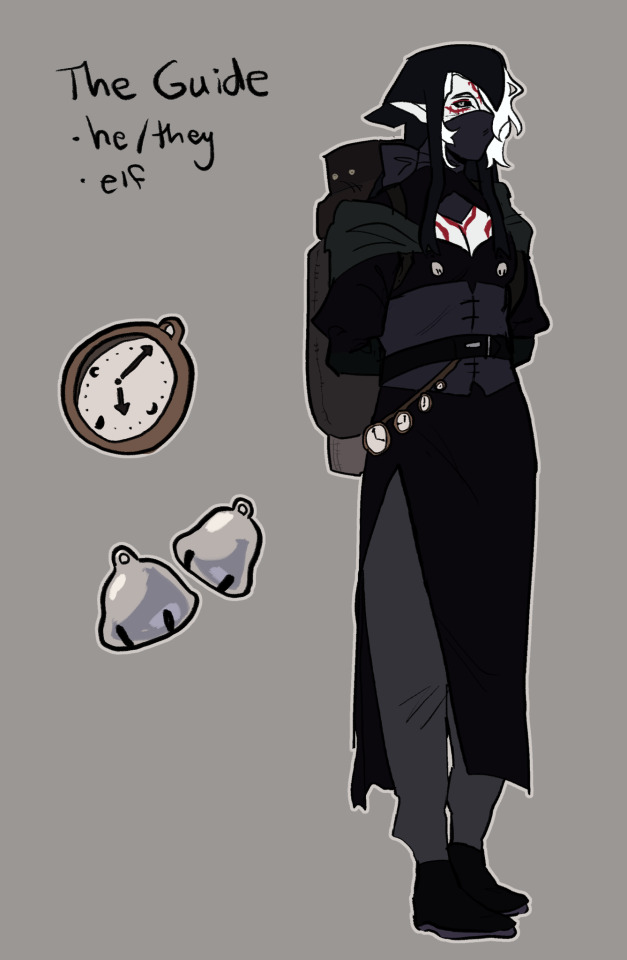
another ref for a character I enjoy
65 notes
·
View notes
Text
The Drow Tradition of Har'luth, rope bondage
(according to Viconia DeVir and BG2)

I dove into BG1/2 to find more drow and bhaalspawn lore, and while there's spades of both, this is a bit I wanted to share.
After a good deal of time of pursuing a... somewhat difficult relationship with Viconia, admitting to the mutual attraction, after sleeping with her at least once before, she tells you she's interested in something... special.
Curiously, the one translation I found of Har'luth sets it's meaning to be 'conquer'.

Note: I am using the wonderful https://www.gibberlings3.net/forums/topic/37854-v106-viconia-romance-expanded-for-bg2ee-phaere-expanded/ Viconia Romance Expanded, which among other things, tweaks dialogue for same-sex romances.
"mrimmd'ssinss" - female lover
It is perhaps unsurprising that in a culture so notoriously backstab-averse, surrendering to someone to this extend would be a show of commitment. It is meant to be a gentle experience, and for that reason, Viconia has acquired silk rope, to not mark her lover's skin.
This game of surrender is about yielding or exchanging power, which is made quite clear if you thought it would be you holding the rope.


This is I expect where this encounter differs from a typical drow har'luth: the male typically submits to the female, or likely, to the person of greater status in the courtship.
I should say, at this point, Viconia's time on the surface has been wanting. By the time you meet her here, she's faced three attempts on her life by surfacers alone. Part of the reason she's travellng with you is that you are a hero of some repute at this point. She is safer with you.
You, on the other hand, are able to turn on her at any point.

Notably, one of Viconia's more recent experiences on the surface at this point was trying to live quietly out on a farm she had legally purchased. When her neighbours, from whom she bought food, found out she was a drow, she was invited for a family feast that night with a kindly smile.
Then she was knocked out, assaulted, and buried alive. Thus, this is what she has come to expect.

I'm afraid I do not remember what options to show your trust there were for elves or half-elves (as my bhaalspawn here is). But, you do still have the opportunity to indulge her.


ssinssrigg - / love / lust / passion / greed / longing

This might be the closest drow get to the concept of aftercare normally: if there is a bond of trust, one might chat. If you mention you are tired in the aftermath, Viconia takes your feedback - she is intent on doing this again, sometime.

Drow exiles on the surface want for a sense of belonging often. At best, you can reassure her that she is not alone in feeling like it. The canon story for the protagonist is that you grew up in a highly reclusive monastery, in which you are unlikely to re-gain entry, and the foster-father you had is now deceased.

Here I want to mention that this is after a good deal of flirting, some fighting over a very rocky start in a relationship, after sex, and after you've let Viconia tie you up.
This is the first time you can ask to hold her, as it's not occurred to her naturally. Sex? Sure. Falling asleep next to someone you fucked? Perhaps later. After she's decided you can be trusted.

A unique experience. - This might indeed be... the first time Viconia has permitted someone to do this for her, in the entirety of her life.
Perhaps such bonding rituals would be more common if they included a little more cuddling afterwards... but then they could be easily used for assassinations, and it would defeat the purpose of it.
Though she's quick to hasten you to move on now, lest you think her a weakling.
(also you can in fact be attacked while trying to rest outdoors or dungeons. I set my odds of being attacked to be quadrupled on a dare so 'more sinister than squirrels and rats' happens often)
As my last note, I will say; these games are old. This one, BG2: Shadows of Amn came out in 2000. It's old enough to vote and drive.
Some stuff (like perhaps parts of Viconia's background, I'm not sure) may have been retconned since, but to retcon something like this, you would have to first acknowledge it. Given Viconia tries quite hard to drive her potential lover away (more on that later) the risk of people hearing about it is miniscule. That is, until I made this post. You're welcome.
#bg2#bg1#drow#adventures in old baldurs gate games#yes that is in fact a much younger Lyth#makes the bit where i wrote a fic about her wanting to tie Minthara up when Minthy asks for commitment amazing#i had not played this then#but then Lyth has the brainworm and has maybe just... intuition. a bit of inspiration to guide her#dnd lore
137 notes
·
View notes
Text
From my in-progress homebrew D&D 5e supplement, Plane Shift: Mirrodin/New Phyrexia: playable Myr!
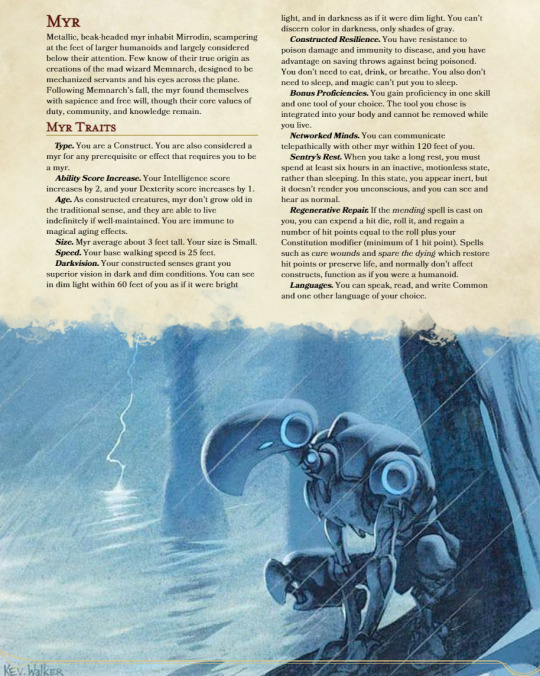
They've been beloved in playtesting, with no fewer than three myr PCs appearing in the party over the course of a 3-year campaign. They are one of two new playable races in Plane Shift: New Phyrexia, along with the core-born Phyrexian.
Constructed Resilience and Sentry's Rest are abilities that previously appeared on the Warforged in Eberron: Rising from the Last War, and Regenerative Repair is a less restricting version of the ability Healing Machine from Astral Adventurer's Guide.
Text from the image under the cut!
Metallic, beak-headed myr inhabit Mirrodin, scampering at the feet of larger humanoids and largely considered below their attention. Few know of their true origin as creations of the mad wizard Memnarch, designed to be mechanized servants and his eyes across the plane. Following Memnarch’s fall, the myr found themselves with sapience and free will, though their core values of duty, community, and knowledge remain.
Myr Traits
Type. You are a Construct. You are also considered a myr for any prerequisite or effect that requires you to be a myr.
Ability Score Increase. Your Intelligence score increases by 2, and your Dexterity score increases by 1.
Age. As constructed creatures, myr don’t grow old in the traditional sense, and they are able to live indefinitely if well-maintained. You are immune to magical aging effects.
Size. Myr average about 3 feet tall. Your size is Small.
Speed. Your base walking speed is 25 feet.
Darkvision. Your constructed senses grant you superior vision in dark and dim conditions. You can see in dim light within 60 feet of you as if it were bright light, and in darkness as if it were dim light. You can’t discern color in darkness, only shades of gray.
Constructed Resilience. You have resistance to poison damage and immunity to disease, and you have advantage on saving throws against being poisoned. You don’t need to eat, drink, or breathe. You also don’t need to sleep, and magic can’t put you to sleep.
Bonus Proficiencies. You gain proficiency in one skill and one tool of your choice. The tool you chose is integrated into your body and cannot be removed while you live.
Networked Minds. You can communicate telepathically with other myr within 120 feet of you.
Sentry’s Rest. When you take a long rest, you must spend at least six hours in an inactive, motionless state, rather than sleeping. In this state, you appear inert, but it doesn’t render you unconscious, and you can see and hear as normal.
Regenerative Repair. If the mending spell is cast on you, you can expend a hit die, roll it, and regain a number of hit points equal to the roll plus your Constitution modifier (minimum of 1 hit point). Spells such as cure wounds and spare the dying which restore hit points or preserve life, and normally don’t affect constructs, function as if you were a humanoid.
Languages. You can speak, read, and write Common and one other language of your choice.
#dnd#dnd 5e#myr#mtg#magic the gathering#mirrodin#new phyrexia#dnd homebrew#glistener's guide to new phyrexia
213 notes
·
View notes
Text
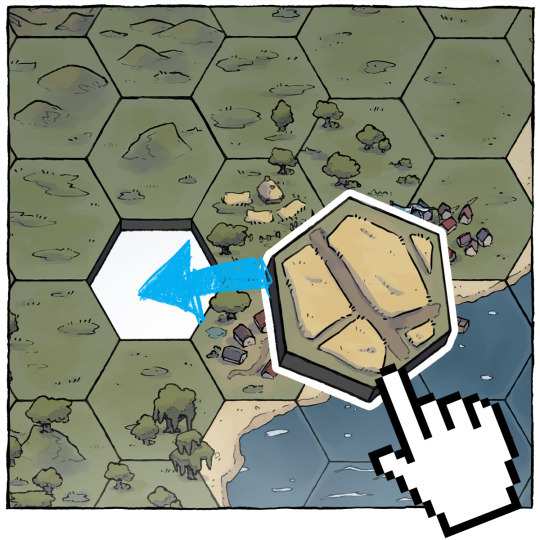
How To Make Hex Maps in Dungeondraft
Here is our step-by-step guide on how to line up your Hex Tiles perfectly in Dungeondraft, using free mods provided by Uchideshi and Hieronymos!
→ Read the Full Guide Here!
#ttrpg#tabletop#dungeons and dragons#dnd#dungeons & dragons#d&d#d&d5e#pathfinder#gurps#rpg#top-down#battle map#map#cartography#encounter#geomorph#guide#tutorial
288 notes
·
View notes